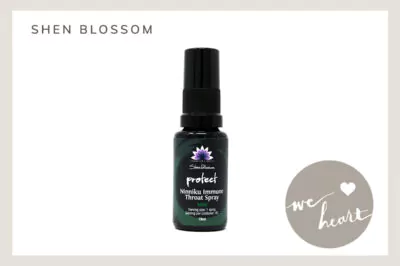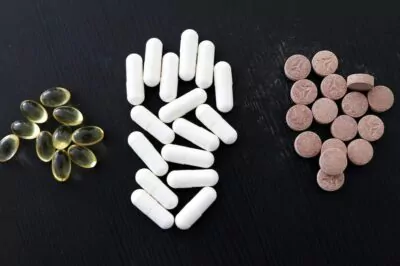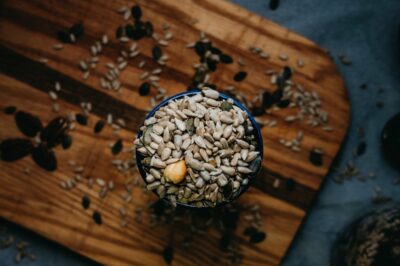Table of Contents[Hide][Show]
Designing a good health regimen involves doing a lot of research, asking a lot of questions, and eventually doing your best to make the most informed decision possible. Choosing a sun protection method (part of a complete health regimen) is no exception.
We’re told to protect our skin from skin cancer, that daily sun exposure increases our risk, and that we should lather up accordingly. But most sunscreens on the shelves contain harmful chemicals, such as oxybenzone, which has been shown in some studies to be carcinogenic and hormone-mimicing. One might wonder if it’s better to brave the sun alone than to wear a sunscreen that’s toxic.
Luckily, there are natural, nontoxic ingredients, like zinc oxide, that can give us sun protection and peace of mind at the same time. Except for one thing: Does protecting our skin from the sun, whether it be with natural or unnatural ingredients, prevent us from getting the vitamin D that we need? Today we explore this topic.
What Does Vitamin D Do
Just so we’re clear on why we need to get enough vitamin D, here’s what it does:
- Promotes uptake of calcium in the intestines
- Acts as an important part of the immune system – Vitamin D deficiency has been associated with increased risk of deadly cancers, cardiovascular disease, multiple sclerosis, rheumatoid arthritis, and type 1 diabetes mellitus
- Helps maintain healthy gut flora, keeping the digestive system healthy
- Supports mood stability
A study done in 2009 at the University of Colorado Denver correlated low vitamin D levels with more frequent cases of respiratory infection. Their tests showed that people with the lowest blood vitamin D levels reported having significantly more recent colds or cases of the flu.
This study suggests a connection between cold and flu season and a lack of sunlight exposure during these colder months. Maybe in addition to upping our vitamin C intake to ward off colds, we should be incorporating some sun bathing as well.
It’s Hard to Talk About Vitamin D
Despite the fact that it’s one of the most researched vitamins (technically not a vitamin at all, but a prohormone) there’s a lot of confusion surrounding vitamin D.
Why is 50% of the population deficient? Even those in warm and sunny climates, like Hawaii, are not making enough vitamin D. (Numbers vary, with another source stating that ¾ of US teens and adults have this deficiency. But in general, we are seeing deficiency go up.)
To throw a personal anecdote in here, about a year ago our office got blood testing done to see where we were, nutrient-wise. The most common deficiency we saw was vitamin D.
How Much Sun Do You Need?
As you probably know, our bodies use sunlight to produce vitamin D. To get detailed, we excrete vitamin D2, which gets exposed the the sun and then pulled back into the body over a period of 24-48 hours as vitamin D3. This is the form that our bodies use.
According to the Vitamin D Council, you only need to expose your skin to the sun for about half the time it takes for you to turn pink. So if your skin reacts quickly to the sun, the amount of time it takes you to produce vitamin D is less.
The more skin you expose, the more vitamin D you will produce. Other factors include how close you are to the equator and the time of day.
And yes, if you use products that protect your skin from UV rays, you are reducing your production of vitamin D. According to Scientific American, wearing protective clothing and lotions can reduce your body’s production of vitamin D by 99%.
But are people applying sunscreen extensively and often enough that they are preventing themselves from getting the sun they need? It could certainly be the case for some, but does it explain the widespread deficiency that we’re seeing?
It Might Be Something in the Soap
Vitamin D, like vitamins A and E, is fat soluble, so our bodies need fat in order to absorb it. In the case of vitamin D, the oil on our skin acts as the fat source. Recent research has shown that when we wash the oil off our skin, essentially every time we shower, we interfere with our uptake of vitamin D3 (a process which we said before, takes about 24-48 hours).
This is more true with soaps and body washes that have harsh ingredients and/or are formulated to remove oil. These products can damage your skin’s acid mantle, which also causes problems like messing with your body’s natural ability to protect itself.
One alternative here is using a gentle and natural product, like our Rosemary Body Wash, that cleanses without disrupting the skin’s pH balance. However, even a natural product is going to remove some of the oil from your skin, and thus have an effect on your vitamin D uptake.
Is it possible that vitamin D deficiency could be associated with our habits of daily (or even twice daily) showers? I definitely wouldn’t rule it out.
And we shouldn’t forget our scalps. The skin on our heads can also synthesize vitamin D3, which is perhaps another reason to avoid washing our hair (aka washing away our oils) everyday.
Can You Get Enough Vitamin D From Food?
Many of us are under the impression that certain foods, like mushrooms for example, can provide us with the vitamin D that we need. Mushrooms do contain some vitamin D, specifically mushrooms that are grown in a certain way, and are then laid out with their gills exposed to the sun for at least 6 hours. When you’re buying mushrooms from the grocery store, it’s very unlikely that they’ve been grown using this method.
Other food sources of vitamin D are fatty fish eggs, red meat, and liver. For a lot of us, that’s not what we want to eat, so getting most all of our vitamin D from the sun is a high priority.
The Bottom Line on Sunscreen
Okay, we can’t actually give you “the bottom line.” Here’s the thing: Skin cancer and vitamin D deficiency are both prevalent afflictions, and you may be genetically more prone to one versus the other. You might make vitamin D quickly, or your skin might get sun damaged easily… We can’t tell you exactly what your body needs.
One thing we can do is suggest that if you’re concerned, you ask your doctor for a Serum 25-hydroxyvitamin D blood test. So if your levels are good, you can rest easy, and if they’re low, you can adjust your game plan. The other thing we’ll do is tell you what our team does to manage our vitamin D levels while also protecting our skin.
Speaking about our team as a whole, we wear sun protection, either a hat or a natural sunscreen, on our faces pretty much everyday. It’s an easy way to protect the part of your body that’s constantly exposed to the elements– not just sun, but also wind and air pollution.
Many of us bike or walk to work in the morning, which means we’re out in the sun for somewhere between 30 mins to an hour a day. In general, we let our arms and scalps (and on particularly sunny Berkeley days, legs) soak up some sun during this time, sans sun protection.
A full day at the beach, a long picnic or hike? We’re lathered up head to toe.
A few of us supplement with vitamin D3 to prevent deficiency. You can read more about how we choose our supplements here.
The last thing we do is cleanse with products that don’t strip our bodies, faces, and hair of our natural oils. This helps our skin absorb vitamin D, in addition to keeping it super soft.
The rest is up to you to decide! Take a look at our sources below for more information on vitamin D and sun protection.
How often do you wear sun protection? Have you checked your vitamin D Levels? Tell us in the comments below.
by Hope Freije
Sources:
Kris Carr – Vitamin D, How I Love Thee
Renegade Health – The Health Benefits of Vitamin D: Exclusive Articles with Dr. J. E. Williams
Renegade Health – Can You Wash Off Your Vitamin D With Soap?
Scientific American – Vitamin D Deficiency Soars in the U.S., Study Says
Vitamin D Council – How Do I Get the Vitamin D My Body Needs
Renegade Health – The Bottomline on Vitamin D








I can’t begin to get enough sun in Portland, OR, and wouldn’t think of wearing a sunscreen everyday! I have to wear long sleeves and long pants until the temperature really warms up in the summer. I have a sample of the Sun Love, but haven’t had a sunny excuse to try it yet. I expect to like it, though, since I really like the concept (for summer days).
This is a helpful, informative article. Thanks for explaining this in such a great way
I have 2 questions:
1.Minerals by Annmarie Foundation provide UV protection, can it be then used everyday insted of Sun Love, and Sun Love when I spend a whole day outside? Will foundation protection be enought?
2. In your article “There’s No Official SPF Rating for Our Sun Love — Here’s Why…” you say that “Titanium dioxide is a heavy metal and likely toxic, particularly if inhaled (as is possible in spray sunscreens)”. But there is titanium dioxide in your Minerals by Annmarie. Would it be safer to use your foundation only when mixed with oil or serum and not as a dry powder to avoid any inhalation?
Thank you
Hi Agnieska,
Thanks for commenting! As far as your first question, we don’t recommend using Minerals by Annmarie Foundation instead of Sun Love if you spend a lot of time outside. If you’re mostly indoors, Minerals by Annmarie should be enough to give you protection day to day. Each shade of Minerals by Annmarie Multi-Purpose Foundation has a different ratio of the four ingredients (zinc oxide, titanium dioxide, mica, and iron oxide). Thus, we can’t precisely specify how much protection your’re getting.
As for your second question, that’s a tough one. As far as we know right now, titanium dioxide is only really harmful if the nanoparticle form is inhaled (we use only non-nano titanium dioxide in our products), and if inhaled in very large amounts. So you can use Minerals by Annmarie Multi-Purpose Foundation dry or as a powder, safely. 🙂
SunLove on my face is a daily routine for me. I think sun protection is very individual. My Northern European roots dictate for me. I cover up and avoid the sun. That was certainly not the case when I was younger. But I’m paying the price now.
I take a liposomal D3/K2 supplement daily. In my case this is formulated to reverse osteoporosis, so it gives me much bang for the buck. My D levels are thriving and my bone density is slowly increasing.
So for some of us–and I think we know who we are–supplementation is preferable to sun exposure.
Just got back from Costa Rica–and it’s impossible to avoid the sun when you are so close to the equator. My skin on arms and legs is so dried out and flaky. Silver lining–maybe I got a D boost. But my skin is a mess.
For years now I’ve semi exfoliated every day with a micro fibre cloth, in the belief that it was good to completely clean my skin of dead cells. Now, after I read what you’ve said about washing off Vitamin D, I wonder if it’s best not to be quite so scrupulous about cleaning away dead cells and just rinse with water to leave the natural oils on the face. What do you think?
Liz
Hi Liz,
Exfoliation is tricky, and yes, you can exfoliate too much. I would cut it down to every other day. Check out our article on exfoliation for more info: https://www.annmariegianni.com/exfoliation-whats-safe/
As far as vitamin D, you don’t need to rely on your face as being your primary source of vitamin D. It’s normal to wash/exfoliate your face more often than the rest of your body.
Good article. I was dismayed by the comments on the last sun screen blog and found that so many people comment without any basis of knowledge whatsoever. While I strongly suspect that chemical cleansers used by most Americans is certainly a factor of causation, consider the other chemicals we use that have the ability to leech oils (fats) from our skin (hair spray, makeup, even laundry detergent). To assume that wearing sunscreen is the cause and affect of Vitamin D deficiency in this country is simply uninformed and irresponsible.
Now, on to the Sun Love sample I’ve used for the past 3 days…I am in love! I had just about settled in to Origins VitaZing sheer tint as my go-to daily tinted moisturizer. I still love it, but the SPF is merely 15 and that’s just not enough for Texas summers. I’ve relegated that to evening and night time wear, in the event I go out.
Sun Love is tinted, but so super sheer. At my age, heavy coverage is not needed or wanted but I do need a little bump to brighten and even out. This stuff is GREAT! It provides ever so slightly sheer coverage but does impart a very natural looking glow or sheen not produced by flecks of highlight or sparkle, as some others do. It feels luxurious on the skin and I finish it with Fior minerals for an essential, flawless look that lasts all day, even through workouts.
I’m a devout follower of Sun Love now and hope that as AnnMarie continues to delve into natural, healthy cosmetics we will all become more educated, aware, and concerned for what we put in and on our bodies.
Can I conclude that zinc oxide blocks the UVB rays, the ones that produce we Vit D from?
I absolutely adore Sun Love. It has the side benefit of acting as a good makeup foundation with its slight tint. Lately I’ve been using it with your new Minerals by Annmarie makeup powders. I dab a bit of Sun Love on my chin and each cheek, then put a tiny bit of powder on my finger and rub it into each dab and then around the area. Wonderfully smooth and great coverage! Thank you so much for these 2 fabulous products.
Hi Valerie,
Yes, products that keep the sun from hitting your skin do reduce your vitamin D production.
To Kathi- You should check out UVA (the harmful rays) vs. UVB (the one that causes our bodies to produce Vit D) and the time of day that you can get these rays. Dr. Mercola has some great information on that. You may want to change your habit of being out early and late in the day!
I really enjoyed this article today! I have mixed feelings myself on how best to get vitamin D because it’s becoming so deficient in our bodies. I am glad to hear that I am doing similar practises as your amazing team is over at AnnMarie. Thank you for your informative article. It helped confirm my own beliefs!
I would also add that many of us are deficient now because we work indoors and do not get outside at the most optimal time to make vitamin D.
HI,
I received a sample of Sun Love, and I have to tell you – I may give up the idea of having to wear foundation! I like the mild glow and I am so relieved to not have to rely on a chemical sunscreen. I have had basal cell carcinoma removed from two places on my face, squamous cell on a knee and back. But I also was concerned about plastering myself with a chemical sunscreen everyday. I will not give up getting some sun each day, but am careful to make it early in the morning, or late in the afternoon, just prior to sunset. Now, I can feel better about being out in the sun and still safe from UV rays. Thank you also for the coupon, I’m ready to stock up!
Kathi
Hi Kathi! So so glad to hear you’re loving Sun Love!!